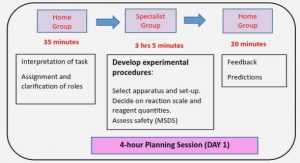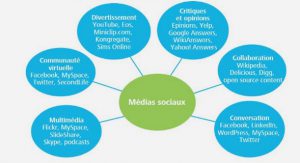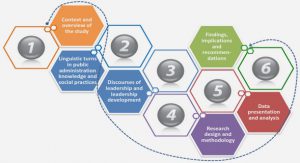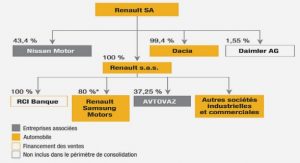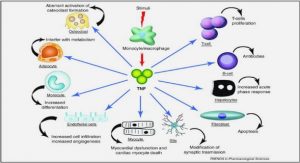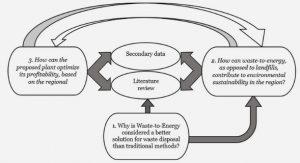Get Complete Project Material File(s) Now! »
Meaningful learning model
The Meaningful learning model (MLM) evolved from Ausubel’s cognitive psychology and posits that learning occurs by the assimilation of new concepts into the perceptions and knowledge that the learner already has (Ausubel, Novak & Hanesian 1978). The MLM is based on the principle that learning takes place primarily by building on existing knowledge which invariably leads to new understandings about the subject. If new learning must be built on relevant knowledge that the learner already has, it is necessary to identify the learner’s prior knowledge about the subject (Novak 2011). Meaningful learning is the product of a deliberate effort to relate new information to the background ideas and knowledge of the learner about the subject. The output is determined by the richness of the new knowledge to be acquired and the organisation of the concept. Novak and Cañas (2006) explained that for meaningful learning to occur the following must be in place:
i. Relevant prior knowledge: The learner must have relevant prior knowledge with which to relate the new information to be learned.
ii. Meaningful materials: The knowledge must be presented with concepts such as patterns, objects and records of events that learners can literarily relate to.
iii. The learner must be ready to learn meaningfully: The learner must make a deliberate effort to integrate new knowledge into existing knowledge.
Development of a school’s curriculum based on the concept of meaningful learning can make room for learners to achieve learning in a more effective way. Since the new knowledge is built on existing knowledge of learners, the general idea for the subject is systematically broken down into more specific areas. Hence the curriculum is constructed to present major ideas in the initial stages and gradually open up into specific details on the subject matter. In this way, learners are able to comprehend the concept and assimilate the information that is presented throughout the entire learning period (Novak & Cañas, 2006). Organising the concepts and principles of instructional materials in a co-ordinated way is effective in promoting meaningful learning (Yildiz & Karabiyik 2012).
PART I: BACKGROUND AND LITERATURE REVIEW
CHAPTER 1 INTRODUCTION AND OUTLINE .
1.1 BACKGROUND TO THE RESEARCH .
1.2 PROBLEM STATEMENT .
1.3 AIM OF THE STUDY .
1.4 JUSTIFICATION FOR THE STUDY
1.5 ORGANISATION OF THE THESIS
CHAPTER 2 . LITERATURE REVIEW
2.1 INTRODUCTION
2.2 IMPORTANCE OF SCHOOL-BASED NUTRITION EDUCATION
2.3 NUTRITION EDUCATION CURRICULUM DEVELOPMENT
2.4 PRINCIPLES AND CONCEPTS OF SCHOOL-BASED NUTRITION EDUCATION .
2.5 ROLE OF THE TEACHER IN SCHOOL-BASED NUTRITION EDUCATIO
2.6 SCHOOL-BASED NUTRITION EDUCATION IN SOUTH AFRICA
2.7 SCHOOL-BASED NUTRITION EDUCATION INTERVENTIONS
2.8 ENVIRONMENTAL INFLUENCES ON SCHOOL-BASED NUTRITION EDUCATION
2.9 DESIGNING THEORY-BASED NUTRITION EDUCATION
2.10 SUMMARY
PART II: EMPIRICAL INVESTIGATION
CHAPTER 3 .METHODOLOGY .
3.1 INTRODUCTION
3.2 RESEARCH PERSPECTIVE
3.3 CONCEPTUAL DEFINITION OF TERMS.
3.4 STUDY SETTING AND POPULATION
3.5 ETHICAL APPROVAL AND CONSIDERATIONS
3.6 DELIMITATIONS OF THE STUDY .
3.7 ASSUMPTIONS .
REFERENCES .
CHAPTER 4 PHASE 1: NEEDS ASSESSMENT ..1 INTRODUCTION
4.2 AIM AND OBJECTIVES
4.3 METHODS
4.4 DATA COLLECTION INSTRUMENTS
4.5 DATA COLLECTION
4.6 DATA MANAGEMENT AND ANALYSIS
4.8 RESULTS
4.9 DISCUSSION
4.10 STRENGTHS AND LIMITATIONS OF PHASE 1
4.11 CONCLUSION ON PHASE 1
4.12 RECOMMENDATION FOR PLANNING THE NUTRITION EDUCATION
PROGRAMME
REFERENCES
CHAPTER 5 PHASE 2: PLANNING THE NUTRITION EDUCATION PROGRAMME .
5.1 INTRODUCTION
5.2 AIM .
5.3 METHOD .
5.4 THE PROCESS
5.5 SUMMARY
REFERENCES .
PHASE 3: IMPLEMENTATION AND EVALUATION OF THE NUTRITION EDUCATION PROGRAMME
CHAPTER 6 . AIM, OBJECTIVES AND METHODS OF PHASE 3
CHAPTER 7 RESULTS OF PHASE 3 .
CHAPTER 8 . DISCUSSION OF PHASE 3
CHAPTER 9 . EXECUTIVE SUMMARY, CONCLUSIONS AND RECOMMENDATIONS .

